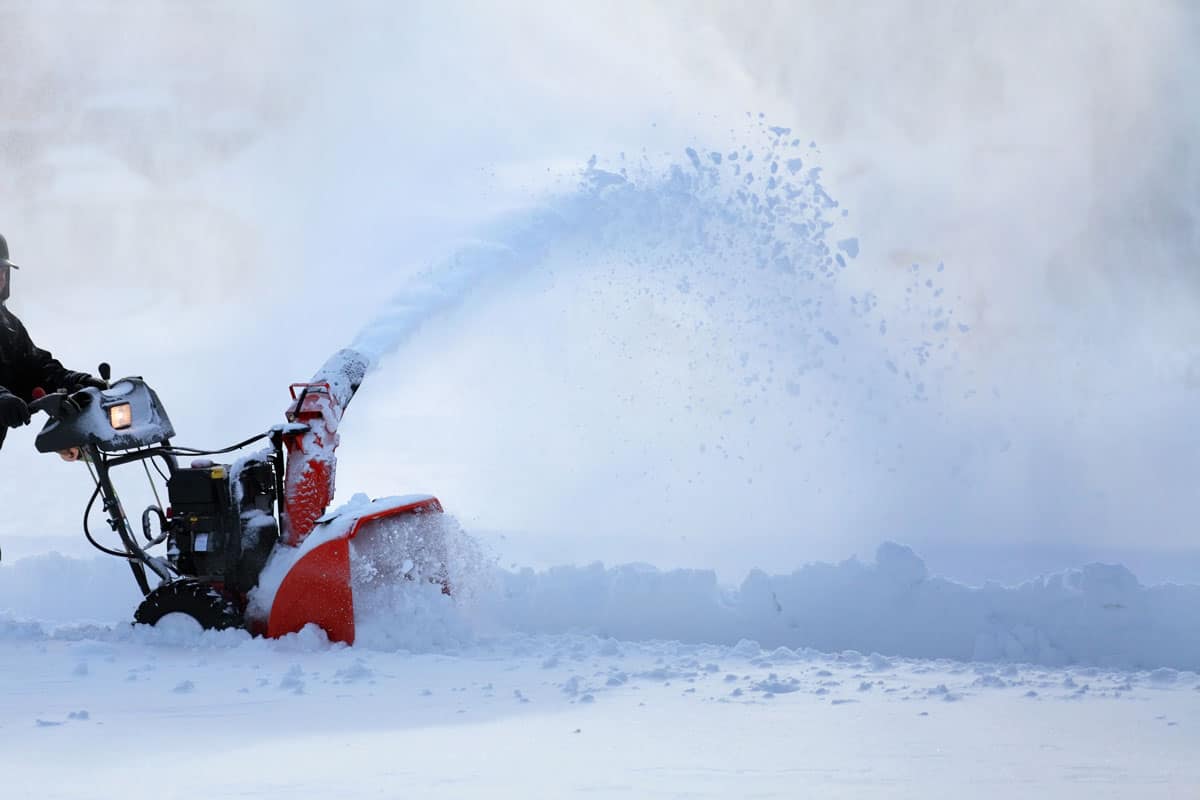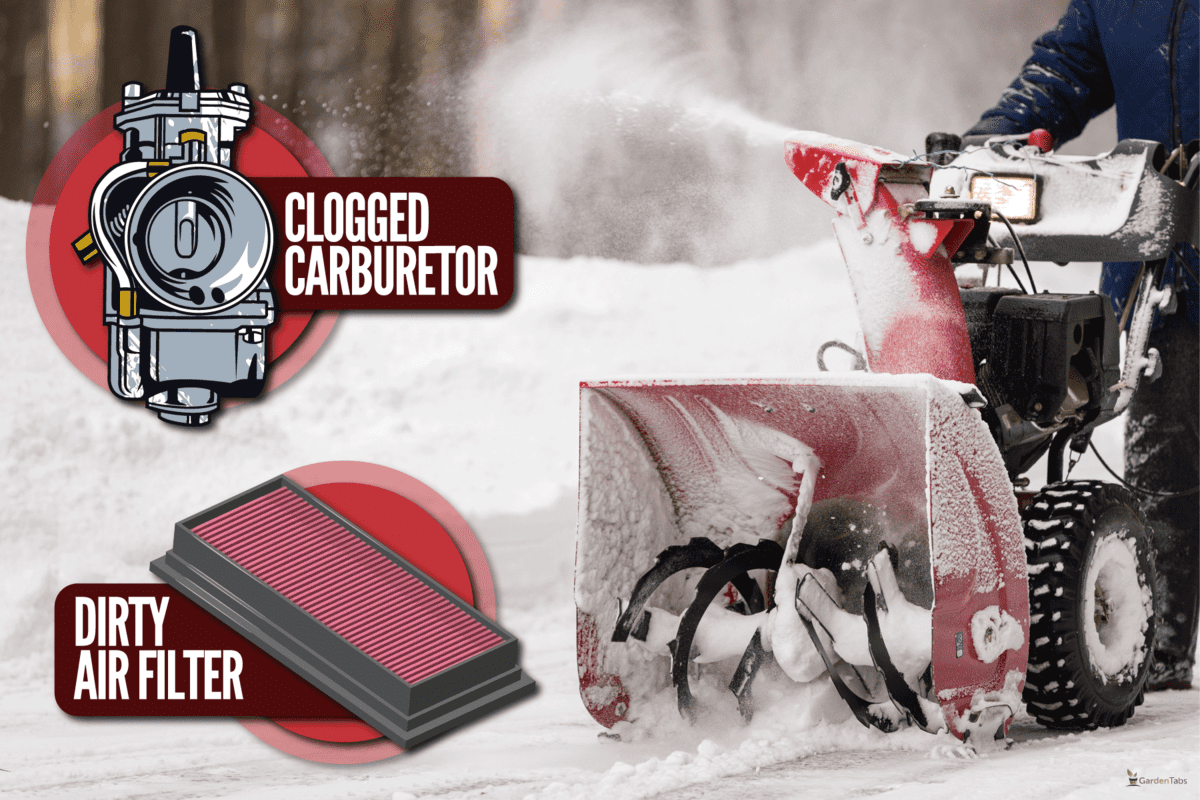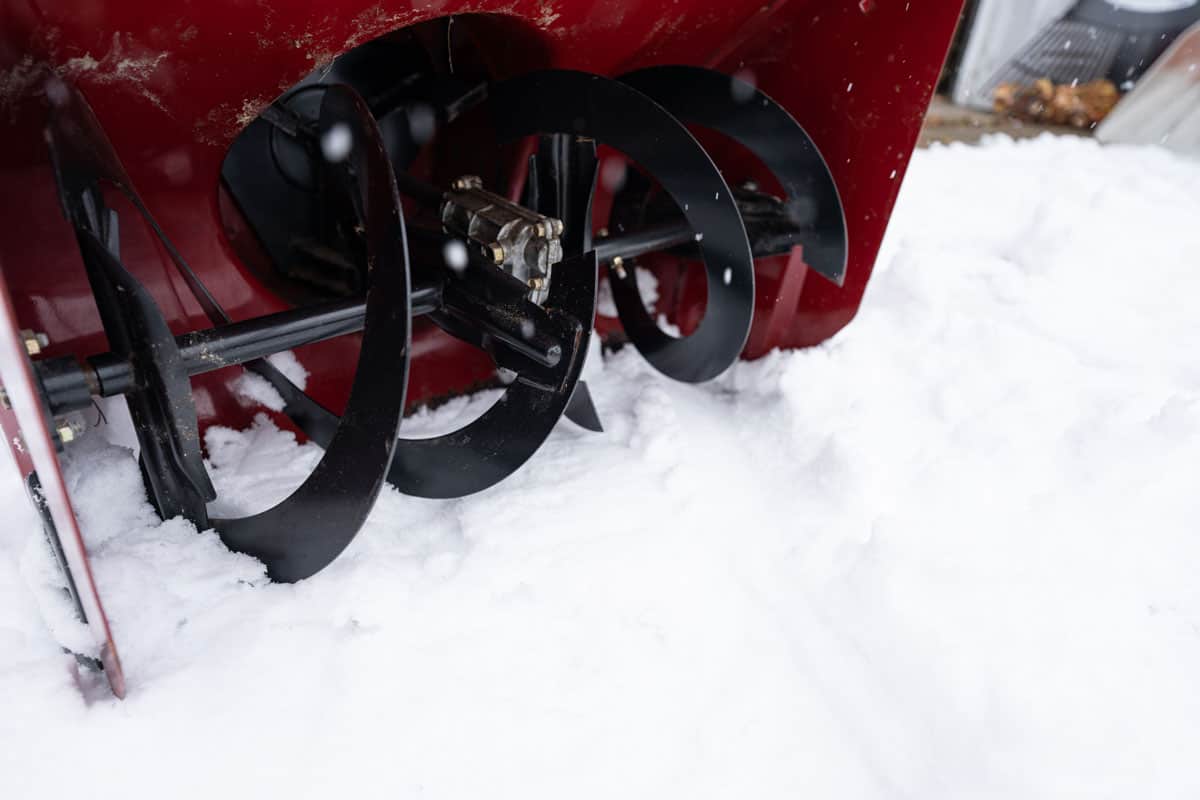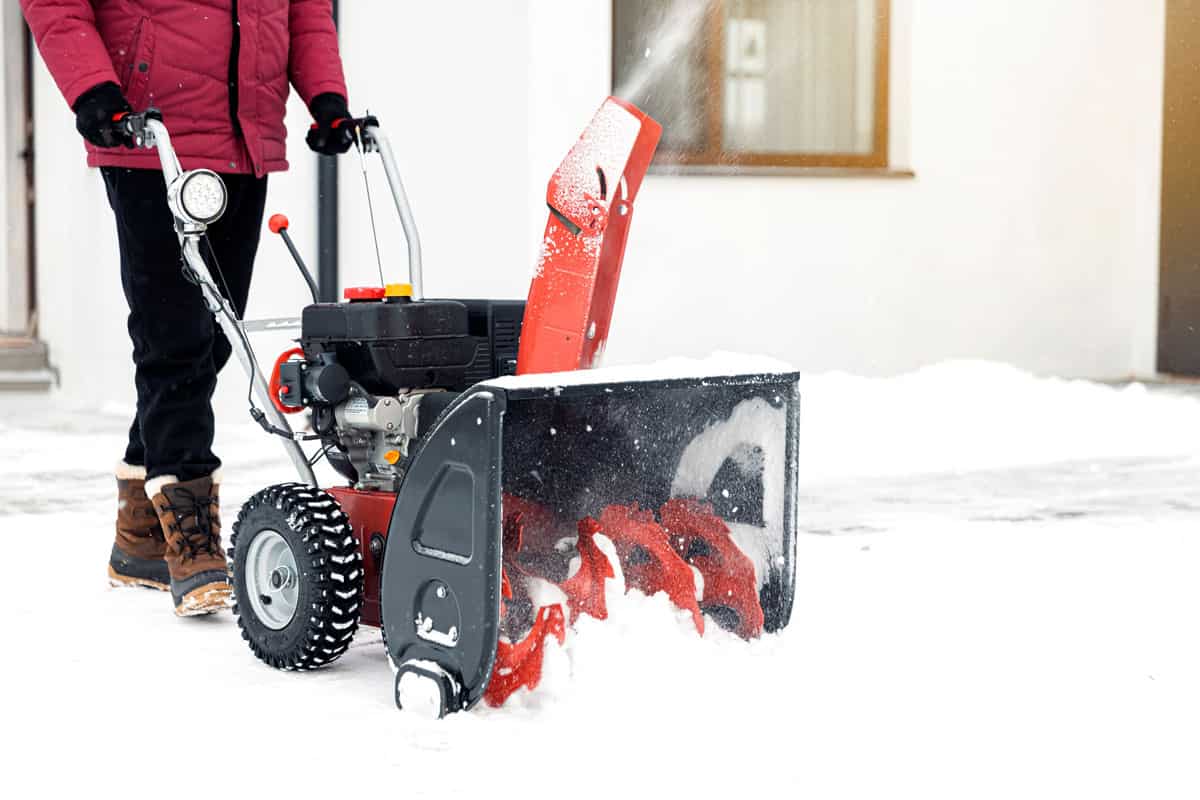The carburetor is crucial to a snow blower's smooth operation. Good thing, then, that whenever the carburetor is malfunctioning, you can solve it as quickly as cleaning it. And after much research, we have specifically determined how to clean a Troy Bilt snow blower carburetor.
To clean the carburetor of your Troy Bilt Snow Blower, you can follow the procedures below:
- Switch off the engine.
- Allow the engine to cool down.
- Carefully detach some components.
- Start spraying the carburetor with the carburetor cleaner.
- Thoroughly clean the other components and areas.
- Check the filter of your snow blower.
Before cleaning the carburetor of your Troy Bilt snow blower, it would be best to familiarize yourself first with the indicators of a dirty one. And to do that, we encourage you to keep reading. Also, as you read this post, you will learn about the maintenance of a snow blower. Let's delve into the details!
What Are The Symptoms Of A Dirty Snow Blower Carburetor?

You can quickly determine whether or not your Troy Bilt snow blower's carburetor needs cleaning. You can check the following indications of a dirty or soiled carburetor.
- The motor is lurching or inefficient. The engine could be operating low because of the inaccuracy of the air-fuel mixture. Your snowblower's engine could be getting excessive air and insufficient fuel if the carburetor is unclean.
- One sign is when a plume of black smoke emerges from the tailpipe. The engine is operating richly because the unclean carburetor delivers excessive fuel with insufficient air.
- The carburetor of your snow blower is undoubtedly dirty if the engine turns or spins over but does not start to operate.
- On the other hand, if it does start, there is a huge possibility that it won't start easily because of the dirt, or it will start as it is in its normal state.
- Another common indicator of a dirty snowblower carburetor is when you are experiencing a rise in your fuel usage.
Carburetor cleaning for your snow blower might be necessary if you observe any of the issues mentioned above. Keep in mind that it would be best not to prolong such indicators if you wish to lengthen the lifespan of your snow blower.
How To Clean A Troy Bilt Snow Blower Carburetor
If you plan to clean the carburetor of a Troy Bilt snow blower, know there is an easy way to accomplish this task.
You can use a snow blower carburetor cleaner. Using such will allow you to clean the carburetor without detaching it from the snow blower. Moreover, remember that you can use a carburetor cleaner in any snow blower brand.
To do the cleaning process correctly, you can check and follow the following procedures:
1. Switch Off The Engine
Safety is the most vital element when cleaning, so it would be best to switch the engine of your snow blower first before trying to clean it.
2. Allow The Engine To Cool Down
After turning off the snow blower, you should allow it to cool to prevent yourself from burning.
3. Carefully Detach Some Components
Detach the flathead, carburetor bowl, and float bowl. Ensure to do it carefully without damaging any carburetor component.
4. Start Spraying The Carburetor With The Carburetor Cleaner
Get the cleaner and spray the carburetor. Allow the carburetor cleaner to sit for a while. After a few minutes, remove all the debris using a rag or cloth. However, if you cannot adequately remove all the stains and dirt from the carburetor, it would be best to remove it from the snow blower and immerse it in the cleaner.
Click here to check out this small engine treatment or carburetor cleaner on Amazon.
5. Thoroughly Clean The Other Components And Areas
In this step, you should clean and remove any rust in the holes, bowl, and nuts. You can remove the additional debris by utilizing compressed air. After that, you should put the components back in their original place.
In addition, if you took apart the carburetor to wash it much more thoroughly, a carburetor kit should come with everything you require to put it back together. To make things easier, get a quality carburetor kit. Make sure everything is back to how it was before you started working on it.
Click here to check out this compressed air on Amazon.
6. Check The Filter
The air filter of a snow blower is one crucial part, so after cleaning, it would also be best to inspect it before starting the engine.
How To Fix A Troy Bilt Snow Blower That Doesn't Start?

Issues with equipment are somehow inevitable, especially if you are using them frequently. In this case, a Troy Bilt snow blower is no exception. There are times that it might experience difficulty.
One example here is when the Troy Bilt snow blower doesn't start. Check the details below:
The Carburetor Of Your Troy Bilt Snow Blower Has Clogged
A clogged carburetor is the most prevalent issue when it comes to a snow blower. Your Troy Bilt might experience this if you try to leave fuel in it for an extended period.
The fuel could lose moisture as days pass, becoming more viscous. Muggy fuel like this might block the carburetor, making the engine inoperable. You can use a carburetor cleaner in the event of a blocked carburetor.
However, if clearing the blocked carburetor doesn't fix the problem, you should either repair it or get a new one.
The Air Filter Of The Troy Bilt Snow Blower Is Dirty
Having problems with the snow blower's air filter is yet another typical occurrence. It is highly advisable to check the air filter for cleanliness before you use it. So that you don't ruin your work and effort by letting unclean air into the carburetor, wash or spray the air filter.
How To Maintain Troy Bilt Snow Blower?

A snow blower is a periodic necessity in the cold. The number of times you might use a snow blower each season might range from a few to more than a dozen.
Prepare your snow blower for the upcoming season by doing the necessary upkeep or activities and following the provided advice.
- Check the spark plug of the snow blower after using it.
- Check the oil of the engine every after use.
- Change the oil of your snow blower engine five hours after first use.
- It is highly advisable to adequately lubricate or oil the gear shaft of your snow blower before storing it.
- Eliminate all the dirt or ensure that the spark plugs are clean after every season.
- Clean or remove all the dirt and debris in the exhaust location of your snow blower after each use.
What Are The Proper Methods When Handling Or Maintaining A Snow Blower?

If you wish to achieve a well-maintained snow blower, it would be best to know how to properly handle it every time you use it and its aftercare. Below are the approaches that you should follow:
Be Extra Cautious
As a general rule, it is highly advisable to ensure your safety first before you handle any equipment, especially if it is your first time managing one.
To stop the engine, you should release all command buttons and turn off the ignition. Do not proceed until the auger has completely stopped. In addition, to keep the engine from igniting accidentally, remove the cable from the spark plug's ignition and ground it against the engine.
However, you should know that starting the engine is dangerous without the spark plug in place.
Watch The Engine Usage
Preserve your vehicle's engine in good condition. And in order to keep the engine running at a safe speed, you must keep the governor at its factory settings.
Provide Complete And Thorough Checkup
Ensure you give the equipment a complete checkup. Maintaining a safe and functional snow blower requires routine checks of fasteners. In addition to a general visual inspection, you should regularly check for fissures or leaks in the fittings, cap, gasoline line, and tank, as well as the condition of the machine itself. It would be best to replace a faulty component immediately.
Prevent Wear And Tear
The skid soles and shave plates on snow blowers can break or become faulty over time. So, for your benefit, it is crucial to keep track of when parts need replacing and to always and only use OEM replacements.
Keep in mind that components that do not conform to OEM standards could cause malfunctions or threaten equipment safety if used in assembly.
Keep Warning Signs In Plain Sight
Keep warning and instructional labels in good condition by regularly replacing them.
Don't Let The Controls Get Out Of Hand
Verify the appropriate engagement and disengagement of the control buttons on a regular basis and make any required adjustments.
Care For The Environment
It would be best to learn about and follow the rules for safely disposing of gas, oil, and other similar materials so that you can help the planet.



